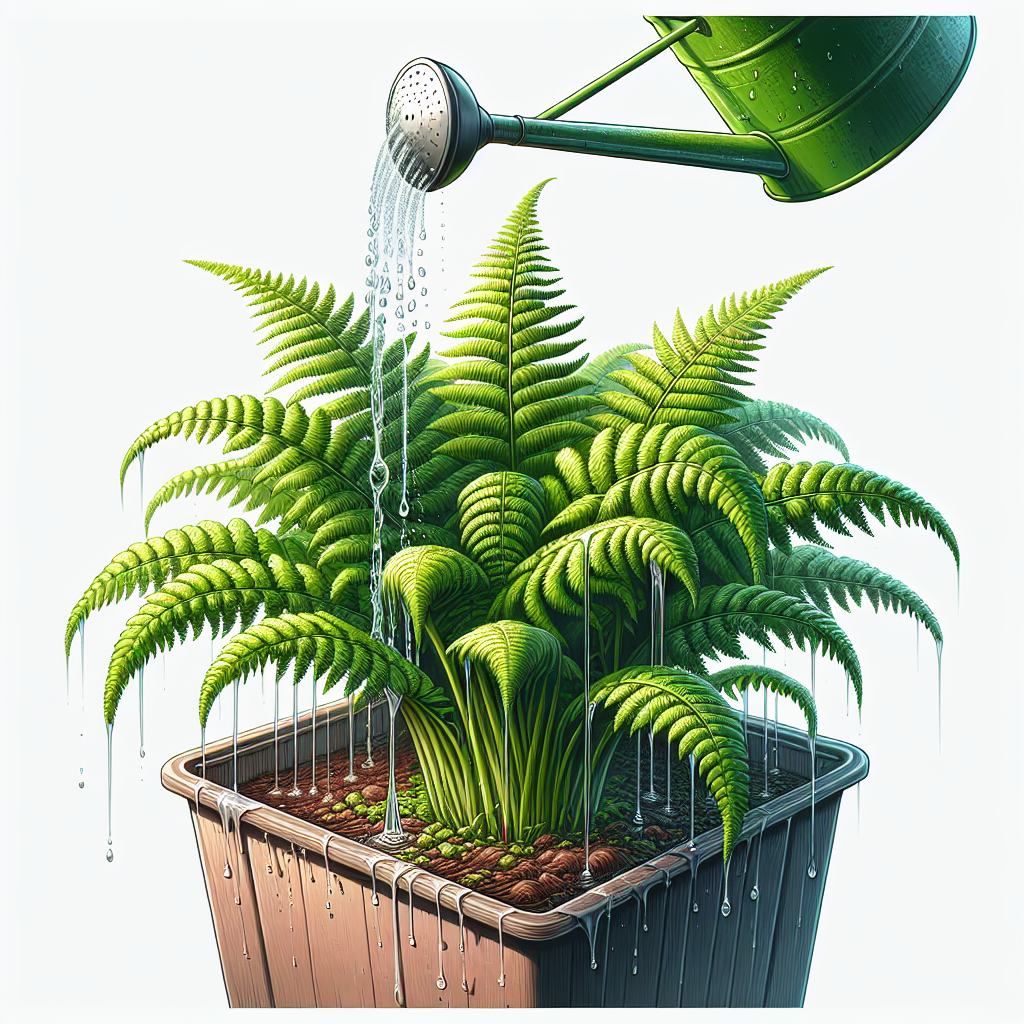Ferns are one of the most beautiful and popular houseplants, loved for their lush green foliage and elegant fronds. While ferns are relatively easy to care for, they do have specific watering needs that must be met in order for them to thrive. Slow drip watering is an ideal method for watering ferns in containers, as it mimics the natural moisture levels that ferns prefer and helps prevent overwatering.
One of the main reasons why slow drip watering is ideal for ferns in containers is because it helps to maintain consistent moisture levels, which is crucial for the health of the plant. Ferns are native to humid, tropical environments where they receive regular rainfall, so they prefer soil that is consistently moist but not waterlogged. Slow drip watering allows water to seep gradually into the soil, ensuring that it is evenly distributed and absorbed by the roots. This helps prevent water from pooling on the surface or draining too quickly through the container, both of which can lead to uneven moisture levels and stress on the plant.
Another benefit of slow drip watering for ferns is that it helps to prevent overwatering, which is a common cause of root rot and other issues in container plants. Ferns have delicate root systems that can easily become waterlogged if they are exposed to too much moisture at once. By using a slow drip system, you can control the flow of water and ensure that your ferns receive just the right amount of moisture without becoming saturated. This will help prevent root rot and other problems caused by excess water, allowing your ferns to thrive.
In addition to helping maintain proper moisture levels, slow drip watering can also make caring for your ferns more convenient and efficient. With a slow drip system in place, you can set up a schedule for watering your plants and let the system do the work for you. This can be especially helpful if you have a busy schedule or tend to forget to water your plants regularly. By automating the process with a slow drip system, you can ensure that your ferns receive consistent care without having to constantly monitor their water needs.
There are several ways to implement a slow drip watering system for your ferns in containers. One option is to use a self-watering container or pot with built-in reservoir that allows water to slowly seep into the soil as needed. These containers typically have a wicking mechanism or porous material that draws water up from the reservoir and delivers it directly to the roots of the plant. Another option is to use a soaker hose or dripper irrigation system that delivers water directly to the base of the plant at a controlled rate. These systems can be set on timers or adjusted manually to provide just the right amount of water for your ferns.
When setting up a slow drip watering system for your ferns, it’s important to consider factors such as soil type, humidity levels, and sunlight exposure in order to provide optimal conditions for your plants. Ferns typically prefer well-draining soil rich in organic matter, so be sure to choose a potting mix that meets these requirements. You may also need to adjust the frequency and duration of watering based on factors such as temperature changes or seasonal variations in light levels.
In conclusion, slow drip watering is an ideal method for caring for ferns in containers because it helps maintain consistent moisture levels, prevents overwatering, and makes caring for your plants more convenient. By implementing a slow drip system for your ferns, you can create an environment that mimics their natural habitat and promotes healthy growth. Whether you choose a self-watering container or install a dripper irrigation system, incorporating slow drip watering into your routine will help ensure that your ferns thrive and bring beauty into your home or garden all year round.













